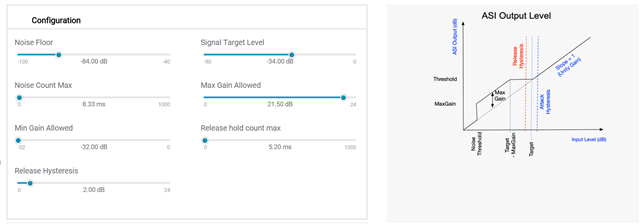Tool/software:
hi
from tac5111 datasheet chapter 7.3.9.1.9 , user can download the document "Using the Automatic Gain Controller (AGC) in TAx5x1x Family application report", but actually it is not for TAx5x1x, please help provide it, now we don't understand the AGC registers means , and also don't konw how to use tac5111 AGC function



